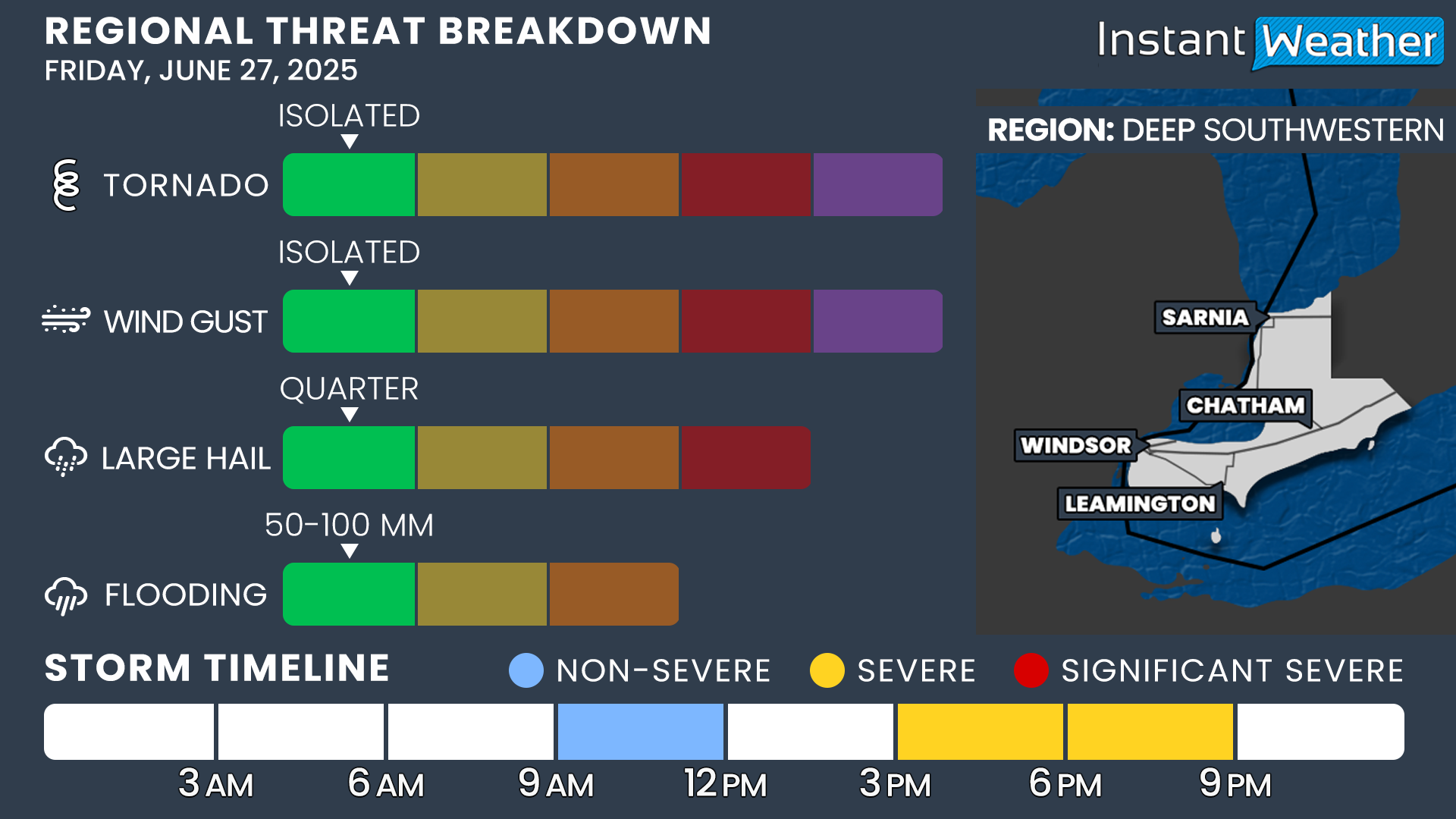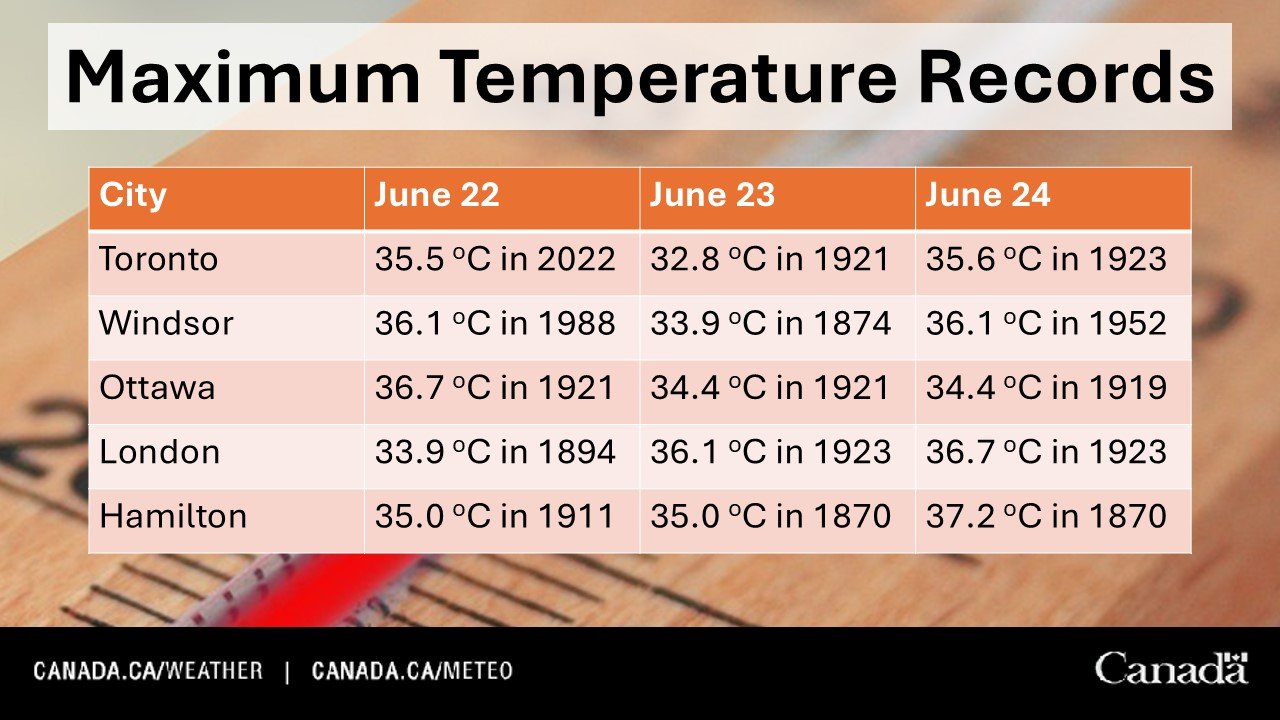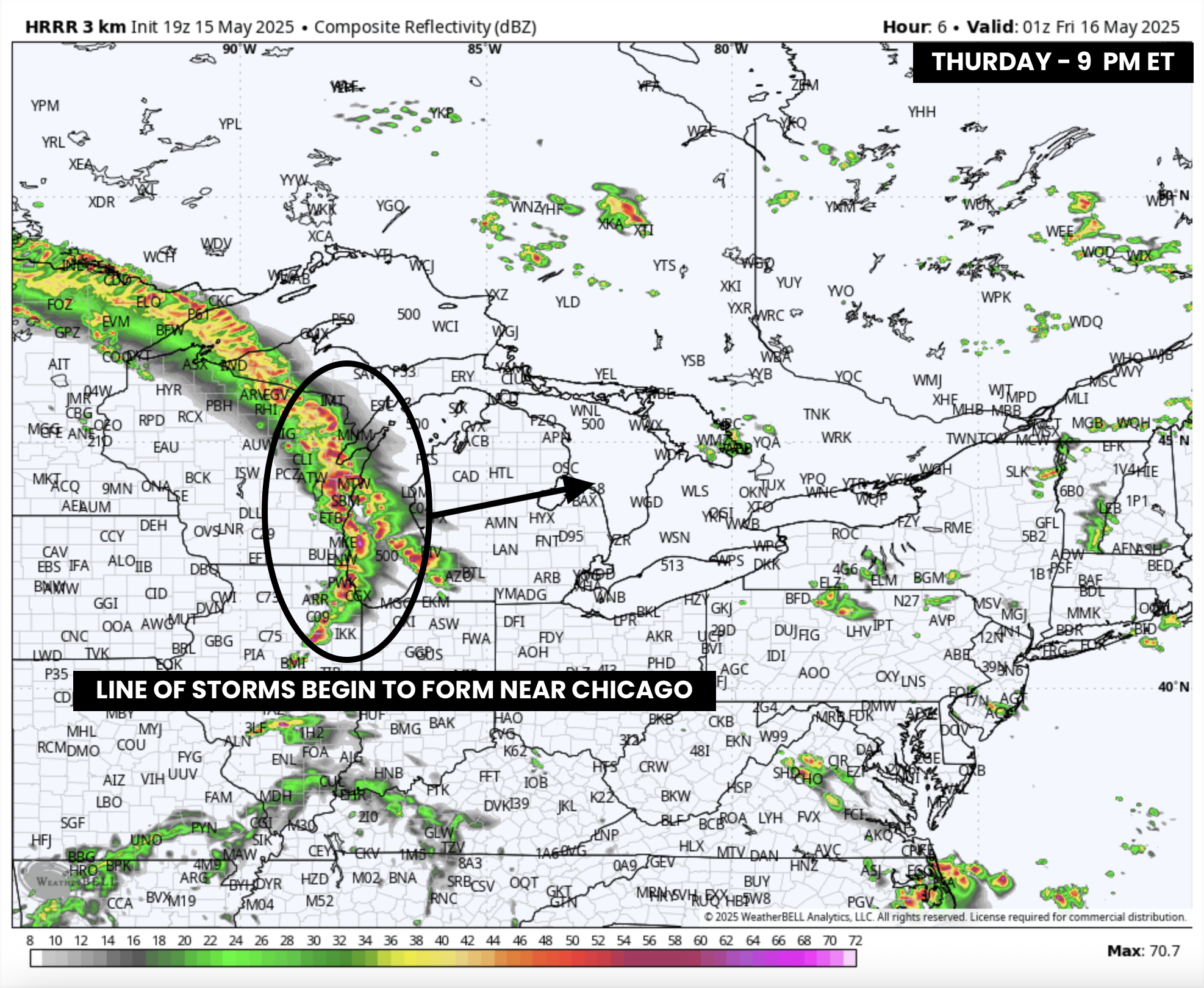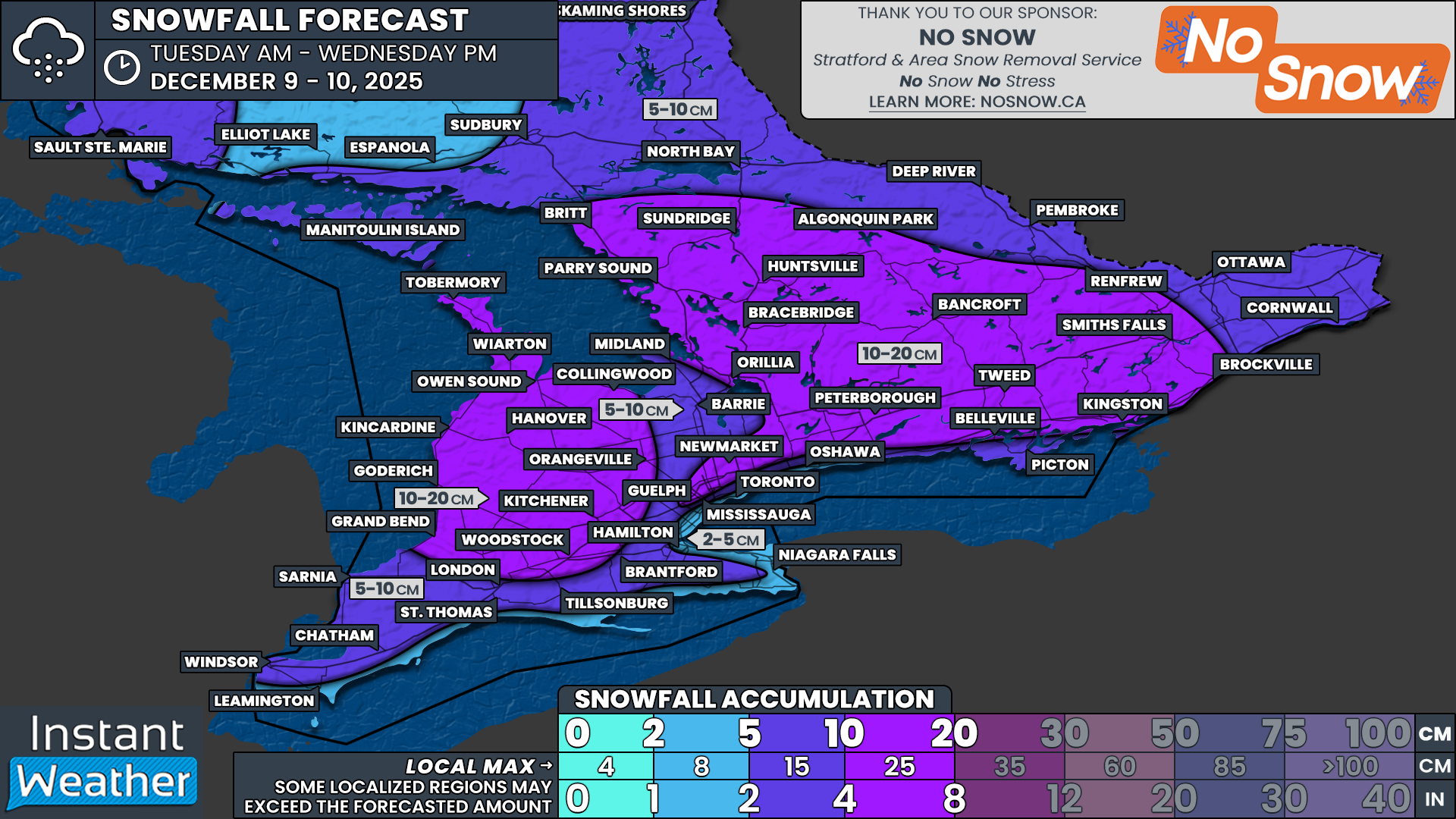Southern Ontario Faces Widespread Severe Threat Including Damaging Wind Gusts, Toonie-Sized Hail & Tornado Risk on Friday
/After Southern Ontario experienced some severe weather last weekend along with our first significant heat wave of the season, things have quieted down over the past few days. Milder air brought temperatures back to seasonal values on Wednesday and Thursday.
However, it looks like we’re about to heat up again heading into the weekend. The good news is, it won’t be anywhere near the oppressive heat we saw earlier this week.
In addition to the return of summer warmth, there’s a growing risk of widespread severe storms on Friday. This threat covers much of Southwestern Ontario and stretches into parts of Central Ontario and the Golden Horseshoe.
Isolated thunderstorms are expected to fire up over Lake Huron and move into a very unstable environment during the afternoon, leading to the possibility of all severe weather hazards. This includes damaging wind gusts, large hail and potentially even one or two tornadoes.
As these storms push eastward into the evening hours, there’s a chance they could merge into one larger cluster of storms. This line may reach portions of the Greater Toronto Area and bring a continued threat of damaging winds, small hail and localized flash flooding.
ESTIMATED DAYTIME HIGH in °C - MAP FROM WEATHERBELL
While the heat has pulled back across much of Southern Ontario over the past few days (except for Deep Southwestern Ontario), we’re expecting it to return on Friday. Areas south of Lake Simcoe will likely see daytime highs climb back into the upper 20s and even low to mid-30s across parts of Southwestern Ontario.
This won’t be the same level of heat we saw earlier in the week, but it will be a noticeable jump compared to the cooler air on Thursday that kept many places under 20°C for most of the day.
Once you factor in the humidity, some parts of Deep Southwestern Ontario could be feeling close to the upper 30s again.
SIMULATED RADAR - MAP FROM WEATHERBELL
As we often see on days with elevated storm risk, the morning could bring some scattered showers or thunderstorms near Lake Huron and Georgian Bay. These are not expected to be severe, but they will play an important role in shaping the setup for later in the day.
If the morning rain and storms linger longer than expected, they could limit afternoon storm development by preventing the atmosphere from fully recovering. This could reduce the strength or delay the timing of any severe storms into the evening when conditions aren’t quite as favourable.
There’s also some disagreement in the forecast models about how far south this morning precipitation might extend, especially in the zone where the severe risk is currently expected to be the highest.
SIMULATED RADAR - MAP FROM WEATHERBELL
If the atmosphere is able to recover in time, we could see isolated storms begin to fire over Lake Huron as early as mid-afternoon (2 to 4 PM), then track inland toward Grey, Bruce and Huron counties.
There’s still some uncertainty on the exact placement of this development. Storms could form anywhere along a corridor stretching from Manitoulin Island all the way down to Sarnia.
ESTIMATED ENVIRONMENT FOR TORNADOES - MAP FROM WEATHERBELL
As these cells develop over Lake Huron, they’ll be moving into a rapidly strengthening environment. Current model data suggests the highest tornado potential may be from Goderich to Owen Sound around 3-5 PM.
This region could see the greatest risk for severe weather during the mid to late afternoon hours. Storms that remain isolated early on may evolve into supercells capable of producing damaging wind gusts, large hail and a tornado or two.
While this particular setup leans more toward Southwestern Ontario, other models point to a similarly strong environment farther northeast into Central Ontario. This includes areas around Lake Simcoe, as well as parts of Simcoe County, Muskoka and the Kawartha Lakes.
SIMULATED RADAR - MAP FROM WEATHERBELL
As the storms push eastward during the late afternoon, current data suggests they may merge into one larger cluster of storms by the time they reach Central Ontario and then move into the Greater Toronto Area during the early evening.
At that point, the tornado threat will decrease, but the risk of damaging winds will become the dominant threat. This is typical when storms evolve into more linear systems.
Flash flooding could also become a major concern, especially in urban areas like the GTA, which are more prone to poor drainage. Some forecast models even suggest that this line could stall or ‘train’ over the same area, which would bring the potential for very heavy rainfall in a short amount of time.
The overall severe threat should begin to wind down between 9 and 10 PM as the sun sets and daytime heating fades. That said, the storm cluster may continue eastward into the Niagara Region and parts of Eastern Ontario overnight, though it’s expected to be non-severe by then.
As mentioned, the highest severe threat will likely be in the mid to late afternoon over Southwestern Ontario, especially as storms come ashore from Lake Huron.
These storms could bring damaging wind gusts, hail up to the size of toonies and possibly one or two tornadoes. The tornado risk would be greatest shortly after the storms reach land and should taper off farther inland.
Deep Southwestern Ontario might also see a few isolated storms develop during the afternoon, though the environment doesn’t look quite as favourable compared to areas farther north.
Still, any storms that do form here could bring isolated damaging wind gusts, quarter-sized hail and even a low-end tornado risk that can’t be ruled out.
As the storms move into Central Ontario later in the day, the primary risk will transition to damaging winds. The threat of hail and tornadoes will decrease, but a few storms could still produce quarter-sized hail and, again, an isolated tornado remains possible.
There’s also the potential for some isolated development around Georgian Bay and Lake Simcoe in the afternoon. If that happens, it could boost the tornado and hail risk across that region.
By the time the line of storms reaches the Golden Horseshoe, it will likely be starting to weaken. However, it could still bring the potential for isolated wind damage, nickel-sized hail and maybe a brief tornado, though that risk becomes increasingly unlikely at that point.
























































